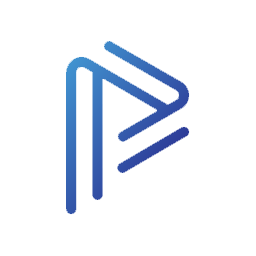
-
Whether novice or expert, 20 years ago the only tool available for deploying and administering classroom training was the LMS (Learning Management System). In recent years, driven by innovation, technology and the latest discoveries about how the learner's memory works, numerous solutions with sometimes barbaric abbreviations have seen the light of day: LCMS, LXP... 🤯 Kesako?
PITCHBOY tries to shed light on the bricks available to deploy your training courses and give your learners an exceptional experience.
The first LMSs (Learning Management Systems) appeared in the early 90s. Their mission: to deploy training content and distribute it to learners, ensure learners' compliance with regulatory obligations ⚖ (mandatory training: Sapin II...), distribute e-learning content exclusively in SCORM format, track results and edit reports.
Limitations:
- Poorly engaging user experience and path
- No adaptive learning offering
- Top-down knowledge transfer format and training measurement focused on on-the-fly knowledge analysis (MCQs, etc.)
- Limited analysis of consumption (completion rate, time spent, average score, etc.)
With the development of digital learning in organizations, LMS platforms have integrated new functionalities and developed their performance:
- he ability to manage multi-modal training: face-to-face via TMS (Training Management System) functionalities [another little acronym for fun 😍 ], blended learning, virtual classrooms, etc.
- The provision of an individual training offer, sometimes via marketplaces such as Talentsoft Content.
Called the Content Management System in French, it has no interaction with the learner. It is the content resource administration and management tool for the designer, trainer and platform administrator.
At the same time, so-called LEP (Learning Engagement Platform) platforms, such as 360 Learning, have emerged to further integrate the social dimension (collaborative learning) and promote learner engagement (e.g., through the provision of learning and practice communities). Mobile learning solutions (such as Beedez and TeachOnMars, among others) have come to fill this need for animation and collaborative sharing between peers.
Objective: knowledge development, easy sharing with peers thanks to simple content creation tools, and the possibility of animating the learner community.
LXPs deliver training content via a personalized experience. They use adaptive learning mechanisms, drawing on data from assessments, recommendations and more. They can exist alone or as a complement to LMS platforms, providing them with an enriched user experience.
Objective : knowledge development tailored to the learner's needs
LRS (Learning Record System) to record all platform usage data.
Birth: 3 to 5 years
Mission: to make the learner an active participant in his or her training, giving them the experience to put their knowledge into practice. The platform integrates LXP and LEP functionalities. Participation and action are at the heart of learning.
For example, PITCHBOY, based on the A.G.E.S neuro-pedagogical model, is an immersive platform that promotes:
- Action: get the learner involved in a learning-by-doing approach.
- Generation of interaction: the learner is never passive. They make decisions and interact naturally, just as they would in their natural working environment.
- Emotions that would emanate from a similar situation in real life are experienced in the same way: joy, stress, frustration...
- Sequencing: the learner can do it again and again, at regular intervals, fixed or free. Each time they repeat the experience, it will be different if they make different choices.

The learner's advantage: allow learners to record themselves and experience a conversation in phone, video or field format, on computer, tablet, smartphone or virtual reality headset. The platform is accessible via a simple browser, in multi-device mode.
The organizational advantage: a skills-based approach. Know-how and know-how are at the heart of the PITCHBOY platform. It's the sandbox of many professional situations.
The immersive platform is the essential building block for a complete skills upgrade: the "learning by doing" space, autonomous and remote, and therefore accessible to large populations of learners, offers the right to trial and replay. This asynchronous solution, in addition to ensuring strong learner commitment, is a valuable tool for HR, training managers and managers in measuring skills.
Objective : to develop knowledge and skills tailored to the learner's needs.
The plus: accessibility on all media. Interfaces with all LMS and LXP on the market.
In short, you have an environment of complementary tools and innovations at your disposal. There are several possible combinations to suit your needs and those of your learners. If your needs are centered on specific metrics (NPS, sales, team turnover...), an immersive platform will be your best ally for steering your business according to learners' skills, and for providing them with personalized support on a large scale. If you want to optimize your training budgets and avoid the mass e-learning model, the adaptive learning of a LEP and an immersive platform will be your magic wand 🌠


2021 Pitchboy SAS. All rights reserved.